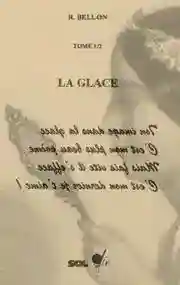Toraja love poem
Sammin
Rupammu lan sammin
Yamo kelong Balloku
Apa sang kappidianri na ta'demo
Ma'katampakanna kuparinayako

Another version
Sammin
Pantarisammu lan sammin,
Iamo pa'tendeng maballoku.
Apako pa'de sang kappidian mata...
Sae lako kukuanna, "lendu' kukamali'mu!"

→ French poem ←
Explanations
Regarding this second translation, the possibilities: The Toraya language can have two, three meanings (and even more), in a word or in a sentence.
Rupam = face
mu = you
sammin = mirror
Yamo = this is/that is/those are
kelong = singing
Ballo = beautiful
ku = me
apa= because/but
sang = verb
kappidi = blink of eyes (quick close eye)
anri = verb
na = verb
ta'de = lost
mo = verb
Other possibility
Pantarisammu [shadow] lan sammin,
Iamo [that is] pa'tendeng [song of poem] maballoku [my beauty].
Apako [because/what a] Pa'de [gone] sang kappidian [quick close] mata ... [eyes]
Sae [well] lako [to] kukuanna [ever/ending], "lendu '[last/arrived] kukamali'mu!" [be loved ones]
The Torajas
Toraja love poem (alternative names, for the language and dialects:Toraja-Sa’dan, Kesu', Rantepao, South Toraja, West Toraja, Basa Toraya, Taeq, Tae', Makale, Sa'dansche, Mappa-Pana, Toraja Barat, Sadang, Sada, Sadan, Toradja, Tallulembangna, Sa'dan), a Malayo-Polynesian language of the Sulawesian branch.
The Sa'dan-Toraja live on what they call the land of the Toraja (the regency or kabupaten of Tana Toraja or Tator), which is located in the southwest peninsula, of the island of Celebes in Sulawesi, in the Republic Indonesia, and nearly ⅓ reside in Ujung Pandang, the large city of South Sulawesi, and in the kabupaten of Bone and Luwu. Their total number is estimated at 500,000.
If between them, the name Sa'dan-Toraja, is distinctive, since it designates all those who inhabit the mountains in the southwest of central Sulawesi, to differentiate them from other Torajas, the neighboring ethnic groups (Makassarais and Buginais), designate them all by a single word: Toraja (Toradja), a word which comes from Buginese and means "The men from above". The word Sa'dan comes from the river of the same name.
In their past, there is something in their culture, which reminds me of the Nagas of Assam, in northeast India. As for them, the raised stones, the wars and the headhunts, were something very pregnant.
Today, the Torajas are very often breeders and cultivators of rice, coffee, peanuts, corn, cassava ... For their religion, if they are Christians, the religion they live is like for many other peoples of the region, very adapted, mixed with their old rites and beliefs.
Their language, also, as it was the case with the majority of the peoples of the world, was only oral, and like almost everywhere else, myths, tales and legends were sung and told among themselves ... the Merok fest, continues to be part of their folklore ...
Even if their culture and language are common, there are cultural and linguistic differences between the Torajas of the mountains and the others; the mountain itself, being an isolating factor for a population.
Moreover, their location, isolated, and in the mountains, has for a very long time preserved them from contact with other peoples, thus preserving their rites and their culture. Their social organization is based on the extended family living in longhouses on stilts, each representing a distinct economic and ceremonial unit. The village confederations are governed by a council of chiefs.
When they wrote, it was in Buginese, that those who were able, did it. Today, we are starting to have certain works which tell and describe their culture. Their language is close to Bugi, the language of their neighbors.